This special guest blog post was originally published in the Summer, 2023 issue of The Clarion, the journal of the The Woman’s Suffrage and Political Issues Chapter of the American Political Items Conservators.
For a free subscription to The Clarion, email the Journal's editor, Ken Florey, at florey@snet.net.
The colors that appear in the designs of suffrage buttons are almost never arbitrary. In general, they reflect the designated colors of the organization that put them out, although on occasion they can represent the official or semi- official colors of the state in which a campaign took place. At times, though rare, they also can express a patriotic motif and are dressed accordingly in red, white, and blue. It is almost impossible to find a suffrage pin in which color is used entirely for aesthetic rather than symbolic purposes.
Below is a list of various American suffrage organizations with the colors generally associated with them. Next issue of The Clarion will include a list of English groups and their colors.
National American Woman Suffrage Association—Yellow or Gold
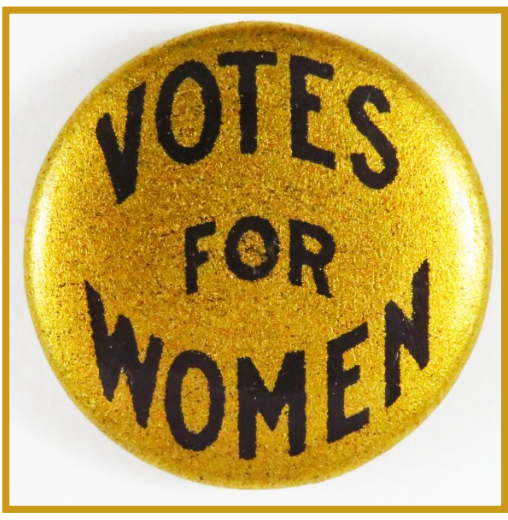
Yellow, as a symbol for the suffrage movement in general, had its roots in 1867 when Eastern suffragists, helping out with the Kansas campaign, noticed that local workers were wearing homemade yellow ribbons in honor of the official flower of the state, the sunflower. Both the color and the flower itself were fairly well established as symbols of suffrage throughout the Midwest by the time of the second Kansas campaign in 1887. The color was formally adopted in 1876 at the convention of the American Woman Suffrage Association in Philadelphia.
Interestingly enough, the National American Woman Suffrage Association never used yellow in any of its lapel material, despite dressing up its conventions in yellow flowers, generally jonquils, and adopting the sunflower as a symbolic icon briefly in the 1890’s. Early sunflower pins and badges were done up in ru- by red glass, and sunflower images on stationery appeared in blue, not yellow. When NAWSA later issued pins, the association generally chose a black on gold combination, although many of its affiliates or sister organizations did employ the traditional yellow.
The Woman Suffrage Party—Yellow
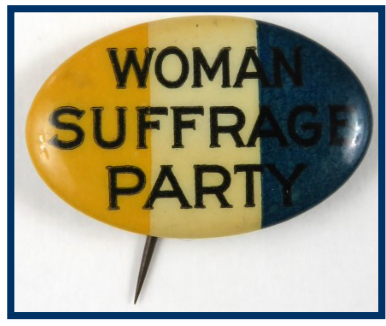
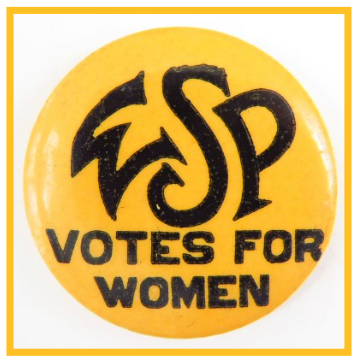
The Woman Suffrage Party was founded by Carrie Chapman Catt in 1909 and dissolved in 1919. Confining its activities to New York, it worked hard to pass a suffrage referendum in 1915 and 1917. It issued a number of badges in yellow; however, because of the location of its activities, it sometimes substituted the New York State colors of blue and yellow (gold).
The Women’s Political Union—Purple, Green, and White and The Women’s Political Union of New Jersey—Purple, Green, and White
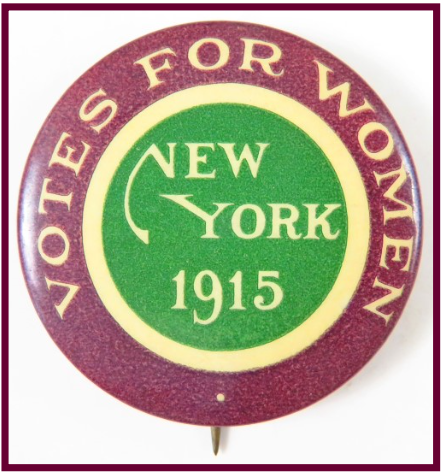
The Women’s Political Union was founded by Harriot Stanton Blatch, daughter of Elizabeth Cady Stanton, out of the Equality League of Self-Supporting Women. Blatch appropriated not only the name of the English militant association, the WSPU, for her own group, but also its colors and at least one of its slogans (“Deeds, not Words”).
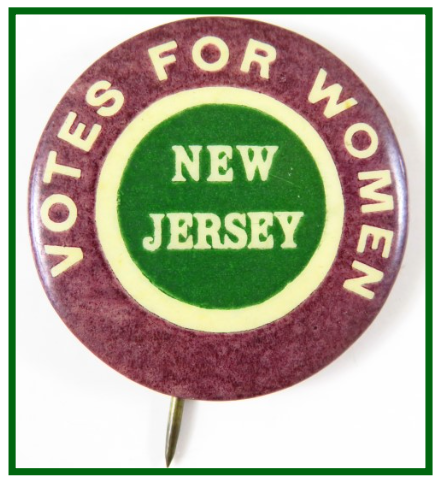
The WPU of NJ was one of two statewide suffrage organizations in New Jersey. It was founded in 1912 by Mina C. Van Winkle, a friend of Harriot Stanton Blatch, from whose WPU she not only borrowed the name for her own organization, but also its colors. Although smaller than the New Jersey Woman’s Suffrage Association, the WPU of NJ surpassed its rival in campaign memorabilia, both in terms of variety and imagination. At times, the WPUNJ described its purple color as “violet.”
National Woman’s Party—Purple, Gold (Yellow), and White

The NWP, formed in 1916, was an out- growth of Alice Paul’s Congressional Union, originally part of NAWSA. No one knows why Paul chose these colors, perhaps it was an attempt to merge the gold or yellow of NAWSA with the purple, green, and white colors of the militant English Association, the Women’s Social and Political Union.
The Connecticut Woman Suffrage Association—Purple, Green, and White and The Just Government League of Maryland—Purple, Green, and White
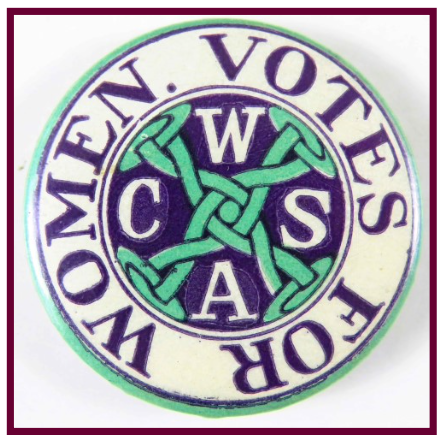
Founded in 1869 by Isabella Beecher Hooker, sister of Harriet Beecher Stowe, the Connecticut Woman Suffrage Association had become moribund at the turn of the century. It was revived in 1910 by Katharine Houghton Hep- burn, mother of the actress, along with a group of young Turks, who attempted to infuse the Association with a more assertive outlook. Hepburn consciously borrowed the official colors of the English militant group, the Women’s Social and Political Union, to augment this effort.
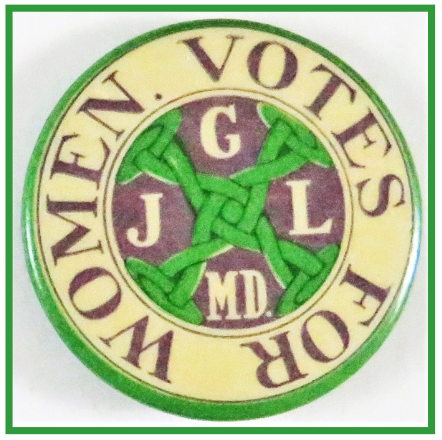
The Just Government League was formed in 1909 by Edith Houghton Hooker, sister of Katharine Houghton Hepburn of Connecticut’s CWSA. The two sisters shared the iconography of their two groups, including the colors of purple, green, and white.
The Equal Franchise Society of New York—Blue
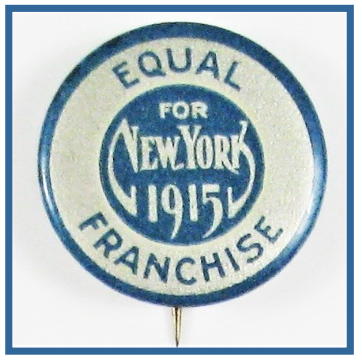
A button issued by the Society, however, is also known in green and gold.
New Jersey Men’s League for Women Suffrage— Black on Yellow

Political Equality Association—Silver (or White) on Blue
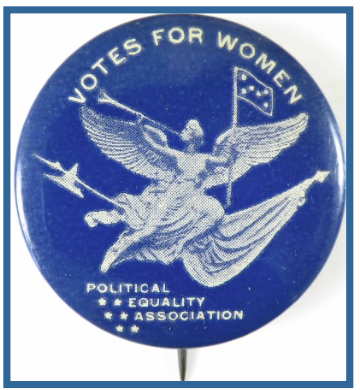
Founded by socialite Alva Belmont in 1909, the Association merged with Alice Paul’s Congressional Union in 1913. Despite being responsible for the color scheme, Belmont refused to “wear the colors” during suffrage marches, although she encouraged her membership to do so.
Washington State Equal Suffrage Association—Green
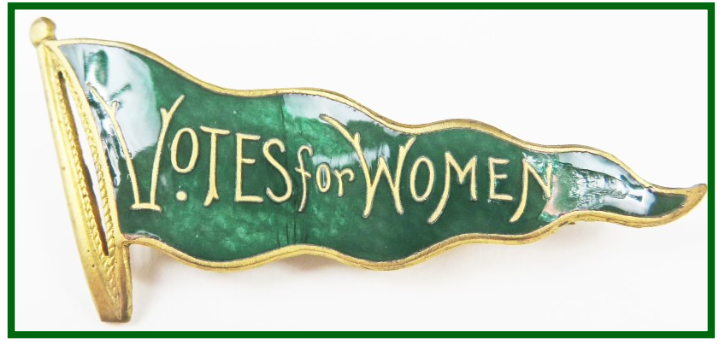
A correspondent from the Washington Association wrote to The Woman’s Journal: “In order to distinguish Washington women, and also to give prominence and a local touch to our campaign, we have selected green as a campaign badge, in honor of our Evergreen State.”
The National Association Opposed to Woman Suffrage—Red or Pink.
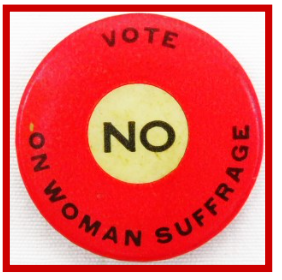
There were several organizations opposed to woman suffrage, generally operating out of New York or Massachusetts, but a few in other states as well. In general, their color was red, and their flower was the rose.
State Colors
Surprisingly, many states do not have official colors, although over the years “unofficial” colors have be- come associated with them. The following is a list of “official” and “unofficial” state colors that have ap- peared on suffrage buttons.
Illinois—Blue and Orange (Yellow)
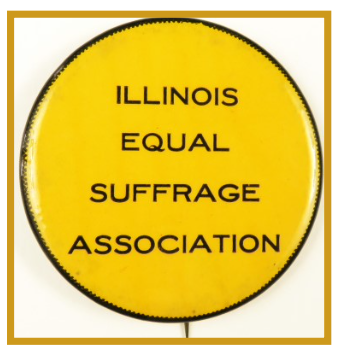
Illinois does not have any official state colors, although blue and orange (yellow) do appear on flags and license plates. In 1913, the Illinois Equal Suffrage Association issued several pins in either blue and white or blue and orange (yellow), including one in 9 stars that preceded the successful state referen- dum in that year and one in 10 that followed it.
Massachusetts—Blue, Green, and Cranberry
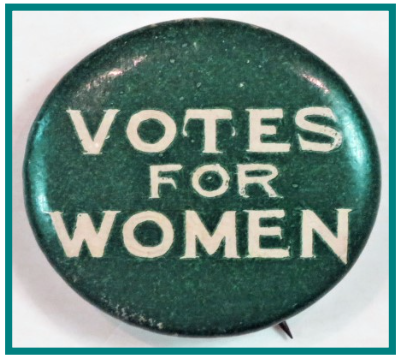
No button is known in all three colors, which were officially adopted in 2005, but at least one button in the state was produced in green.
New York—Blue and Gold (Yellow)
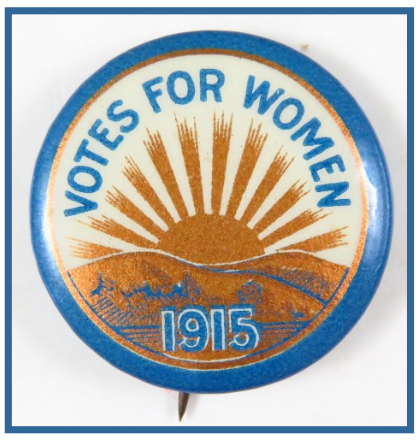
Probably issued by the Empire State Campaign Committee for the 1915 referendum in New York. The Woman Suffrage Party also issued a few pins in the State Colors.
Pennsylvania—Blue and White (Some say Gold)
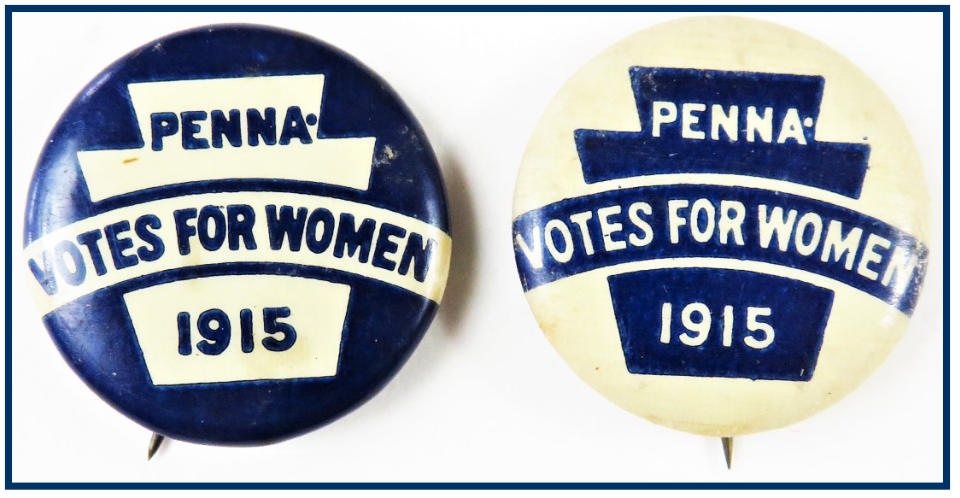
Generally, pins issued by the Pennsylvania Woman Suffrage Association were in the state colors.
